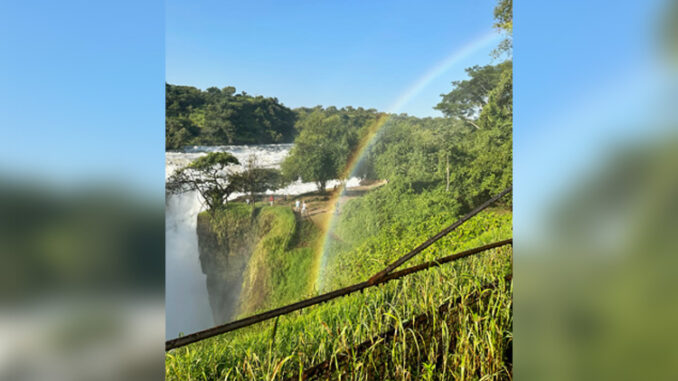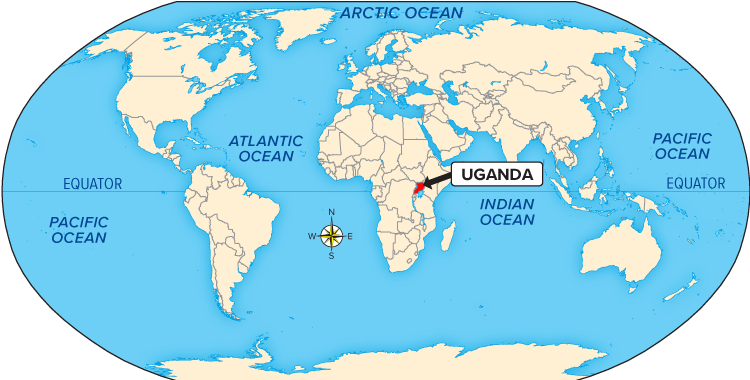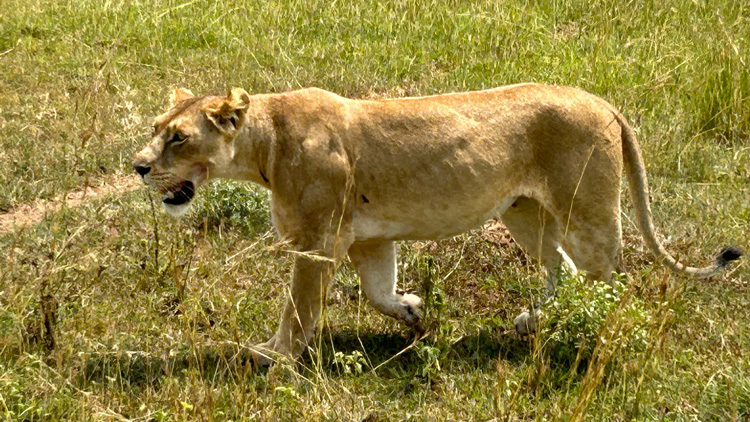
The Equator is a line around the Earth exactly halfway between the North Pole and the South Pole. The East African country of Uganda is one of only 13 countries that the Equator runs through. Equator sites are popular places to visit in Uganda. Keep in mind, the Equator is not a physical line that people can see. So, when people visit, they look at markers of where the Equator would be if it was visible.

However, Uganda has plenty of natural wonders that people can see. Lake Victoria, Africa’s largest lake, borders Uganda. Waters that flow out of it help to form the Nile River. The Nile River is the largest river in Africa. It is one of the largest rivers in the world. The waters of the Nile include spectacular waterfalls such as Murchison Falls. The natural beauty of the waterfalls makes this a popular place to visit.
Uganda has more natural beauty than just its lakes and waterways. Uganda is also known for its spectacular wildlife. It is home to over 350 species of mammals, including all the “Big Five” African mammals, large mammals that people consider it challenging to see in the wild. These consist of lions, leopards, rhinos, elephants, and African buffalos. Uganda is home to many other fascinating species including great chimpanzees, mountain gorillas, giraffes, African eagles, monitor lizards, crocodiles, and many more.

Many people travel to Uganda to take special trips called safaris to see these animals in their natural habitats. Queen Elizabeth National Park is the site for many of these safaris. It is a 764 square mile wildlife reserve that is home to 95 species of mammals and over 600 species of birds. This is one of widest varieties of different species in the entire world.
What Do You Think? What natural wonder of Uganda are you most interested in? Why?
Photo Credit: McGraw Hill



